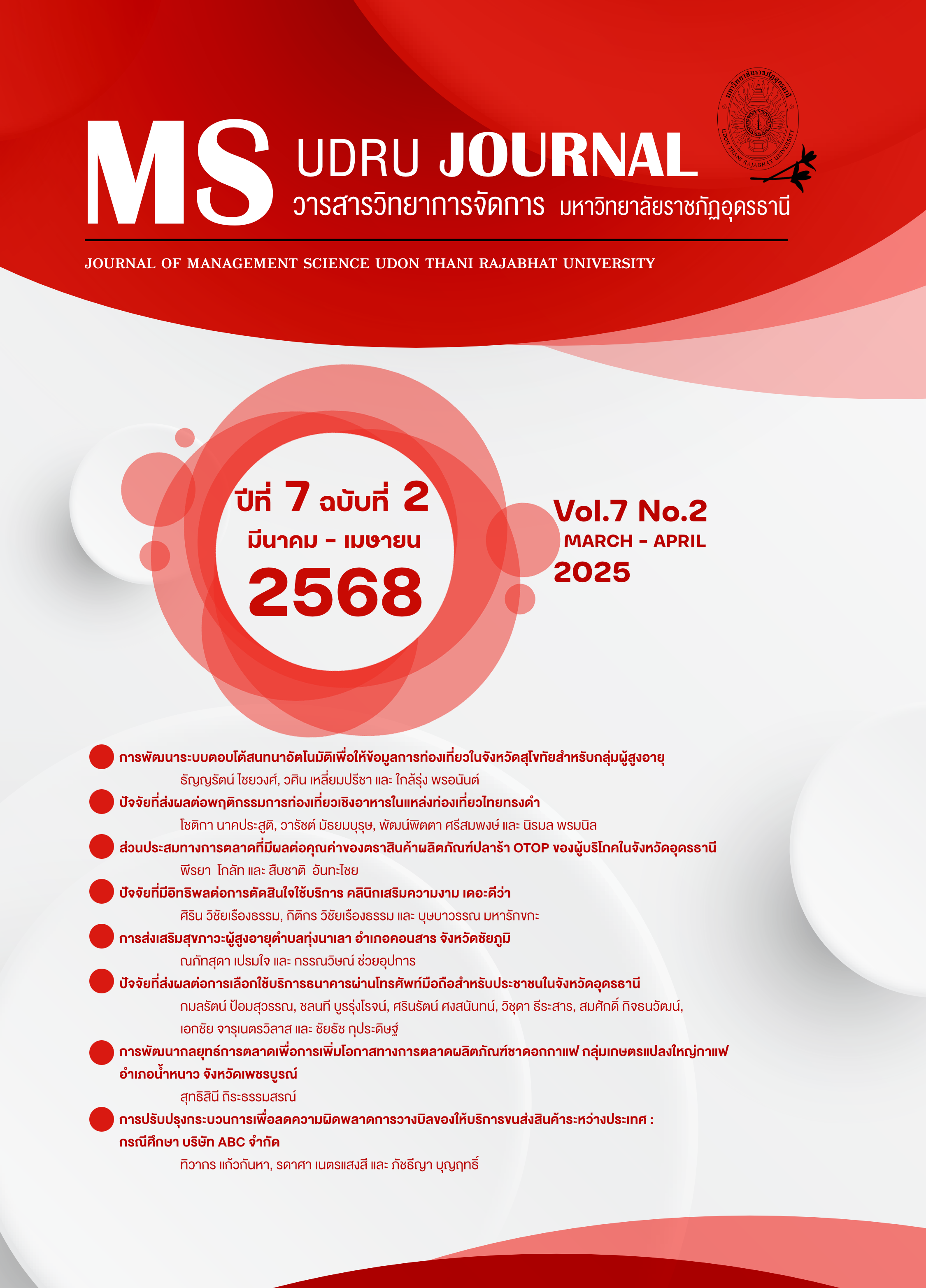IMPROVING THE PROCESS TO REDUCE BILLING ERRORS FOR INTERNATIONAL FREIGHT FORWARDERS : CASE STUDY OF ABC COMPANY
Main Article Content
Abstract
This research attempts to: 1) investigate and analyze the problems in the billing process of international freight forwarders; 2) improve the billing process's efficiency; and 3) conduct a comparative analysis of errors and wait times prior to and subsequent to the billing system upgrade. We utilized a participatory action research (PAR) model with an integrated PDCA cycle that involves planning, doing, checking, and acting. The specific population consisted of five executives and employees from ABC Company. The research instrument was a structured interview conducted through a focus group discussion. The collected data was analyzed using a fishbone diagram to pinpoint the root causes of defects and failures and to explore improvement strategies for our processes and workflows. The quality control cycle was applied to plan, implement, gather results, and review the plan if the desired outcomes were not achieved. Four main problems were identified, including billing delays, inaccurate information dissemination by service providers, employee knowledge and experience deficit regarding bill verification, and lack of proper resources and processes. The problems that arise reflect the insufficient work efficiency of service providers, employees, and work systems. Therefore, we have improved the billing process by requiring the service provider to scan the draft bill and send it to the logistics staff for review. Upon validation, we will release the actual bill to the company. Finally, the company collects data to evaluate the improvements. It was found that errors in billing could be reduced by 49 percent, accounting by 92.45 percent, and the time required to pay service fees could be reduced as well. Using a waiting period of 3 days, the period decreased by 11 days, accounting for 84.62 percent, resulting in faster bill delivery. This improvement in the billing process not only reduces errors and increases work efficiency. But it is also a beneficial example of applying scientific principles to solving problems in organizations.
Article Details

This work is licensed under a Creative Commons Attribution-NonCommercial-NoDerivatives 4.0 International License.
บทความที่ได้รับการตีพิมพ์เป็นลิขสิทธิ์ของคณะวิทยาการจัดการ มหาวิทยาลัยราชภัฏอุดรธานี
ข้อความที่ปรากฏในบทความแต่ละเรื่องในวารสารวิชาการเล่มนี้ ไม่ใช่ความคิดเห็นและความรับผิดชอบของผู้จัดทำ บรรณาธิการ กองบรรณาธิการ และคณะวิทยาการจัดการ มหาวิทยาลัยราชภัฏอุดรธานี ความรับผิดชอบด้านเนื้อหาและการตรวจร่างบทความแต่ละเรื่องเป็นความคิดเห็นของผู้เขียนบทความแต่ละท่าน
References
กรมศุลกากร. (2566). สถานการณ์นำเข้าส่งออกของไทยปี 2566. สืบค้น 20 ธันวาคม 2566, จาก www.customs.go.th.
ณัฐนิชา กองเนียม. (2564). การปรับปรุงกระบวนการนำเข้าและการเดินพิธีการโดยแนวคิดแบบลีน : กรณีศึกษา บริษัท ไทยออยล์มารีน จำกัด. ข้อมูลผลงานของผู้เรียนและผู้สำเร็จการศึกษา สาขาวิชาการจัดการอุตสาหกรรมพาณิชยนาวี. สืบค้น 20 ธันวาคม 2566, จาก https://buulog.com/index.php/project-student/.
นิพล กัณจณศิริ. (2554). แผนผังก้างปลา. สืบค้น 20 ธันวาคม 2566, จาก https://www.gotoknow.org/.
สุภัททา ปิณฑะแพทย์. (2564). การสัมภาษณ์เพื่อการวิจัยเชิงคุณภาพ Interviews for Qualitative Research. วารสารพัฒนาธุรกิจและอุตสาหกรรม, 1(3), 1-3.
ฮิโตชิ คูเมะ. (2011). Management by quality (MBQ). (ปรีชา ลีลานุกรม, ผู้แปล). กรุงเทพฯ: ส.เอเชียเพรส.
Mycoted, Comp. (2004). Plan Do Check Act (PDCA). สืบค้น 20 ธันวาคม 2566, จาก http://www.mycoted.com/creativity/techniques/pdca.php.
Abou El Hassan, D. S., Elsherpieny, E. A., Kholif, A. M., & Khorshid, M. A. (2017). The role of failure mode and effects analysis in improving the quality performance of dairy laboratories. Journal of Food Safety, 37(4), e12364.
Jagusiak-Kocik, M. (2017). PDCA cycle as a part of continuous improvement in the production company-a case study. Production engineering archives, 14(14), 19-22.
Realyvásquez-Vargas, A., Arredondo-Soto, K. C., Carrillo-Gutiérrez, T., & Ravelo, G. (2018). Applying the Plan-Do-Check-Act (PDCA) cycle to reduce the defects in the manufacturing industry. A case study. Applied Sciences, 8(11), 2181.


